Barracudas: Family Sphyraenidae
Species: Sphyraena argentea (Girard, 1854); from the Greek word sphyraena (an ancient name meaning hammer fish) and the Latin word argenteum (silvery).
Alternate Names: Pacific barracuda, cuda, barry, gar, fire hose, stove pipe, skinny, scooter, scoot, snake, slime, slimestick, pencil (small fish), barelycuda (small or short fish), or log (big fish). In Mexico called barracuda plateada.
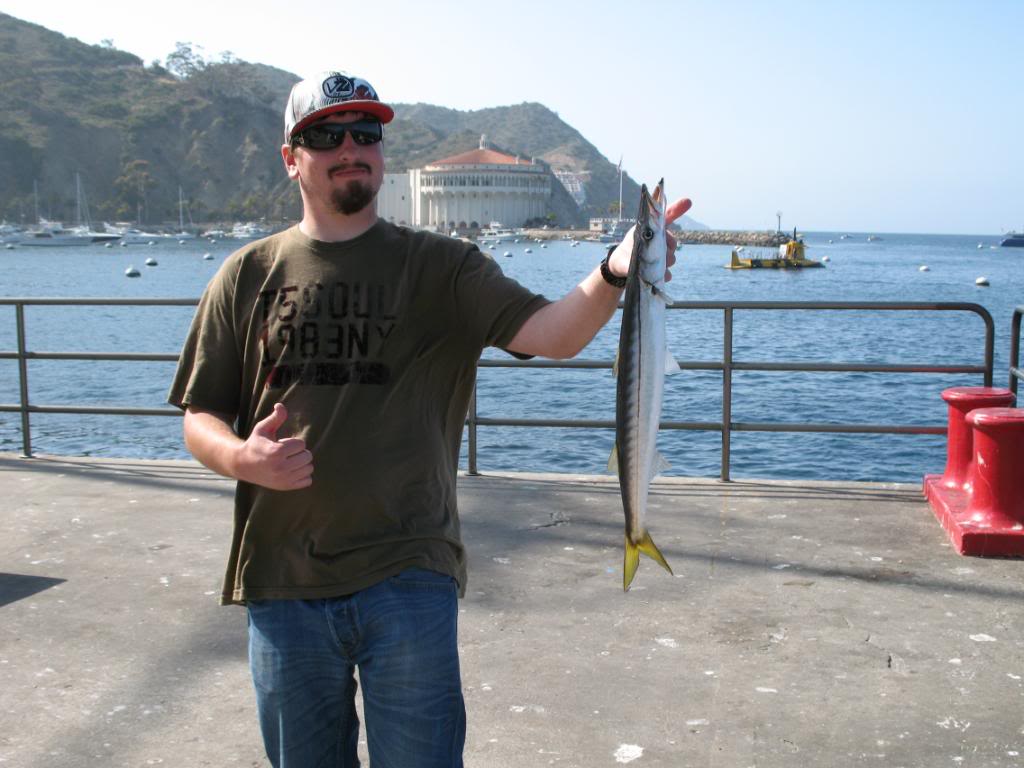
Barracuda at the Cabrillo Mole in Avalon
Identification: Barracuda are long and slender with a sharp-pointed head and a mouth full of very sharp fang-like teeth. They have two widely separated dorsal fins. They have a distinct look from most other fish, although the young look a little like lizardfish. They are considered ambush predators.
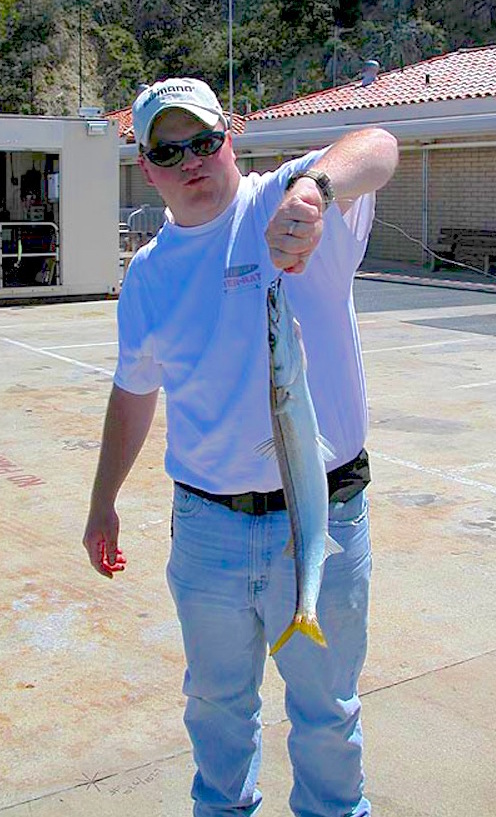
Baitfish (Adam) and a barracuda at the Cabrillo Mole in Avalon
Size: Reported to 5 feet but recorded to 4 feet and 18 pounds; most caught from piers are under 30 inches. Almost all large barracuda are females. The California angling record fish weighed 15 lb 15 oz and was caught near San Onofre in 1957. The diving record fish is 14 Lbs 7 oz for a fish taken at Catalina Island in 1957.
Range: Gulf of California, Islas Revillagigedo, Pacific coast from Cabo San Lucas, southern Baja California, to Kodiak Island, Gulf of Alaska. Common from Bahia Tortugas, southern Baja California, to southern California. During warm water years may move north into central California.
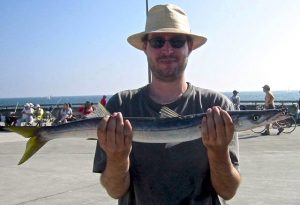
A barracuda from the Venice Pier
Habitat: Nearshore epipelagic, near surface down to a recorded depth of 125 feet. Young barracuda are often found inshore and in bays.
Piers: Only common at piers north to Point Conception although fish will sometimes be caught as far north as Pismo Beach and Avila in the late summer and fall months. Best Bets: Shelter Island Pier, Ocean Beach Pier, Oceanside Pier, San Clemente Pier, Dana Harbor Pier, Seal Beach Pier, Cabrillo Beach Pier, Hermosa Beach Pier, Manhattan Beach Pier, Venice Pier and (by far the best) the Cabrillo Mole at Avalon on Catalina Island.
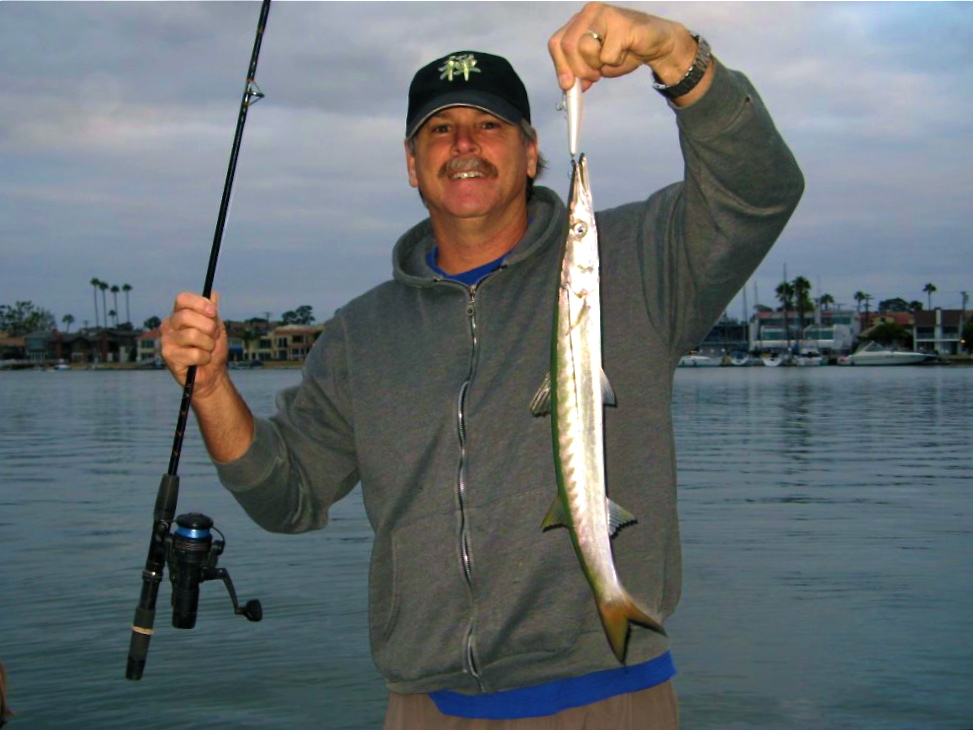
Barracuda of this size are often common in bays and harbor areas
Shoreline: Young barracuda are a frequent catch in southern California bays, especially from jetty areas.
Boats: One of the main southern California boat species.
Bait and Tackle: Live anchovies, when available, are by far the best bait. If using live anchovies, try a size 4 hook and a sliding leader or use a float/bobber to keep the leader at mid-depth. Small smelt can also be used for live bait although they are not as good as anchovies. Shiny spoons, especially gold-colored Krocodiles and Kastmasters have proven to be reliable artificial lures for the scooters.
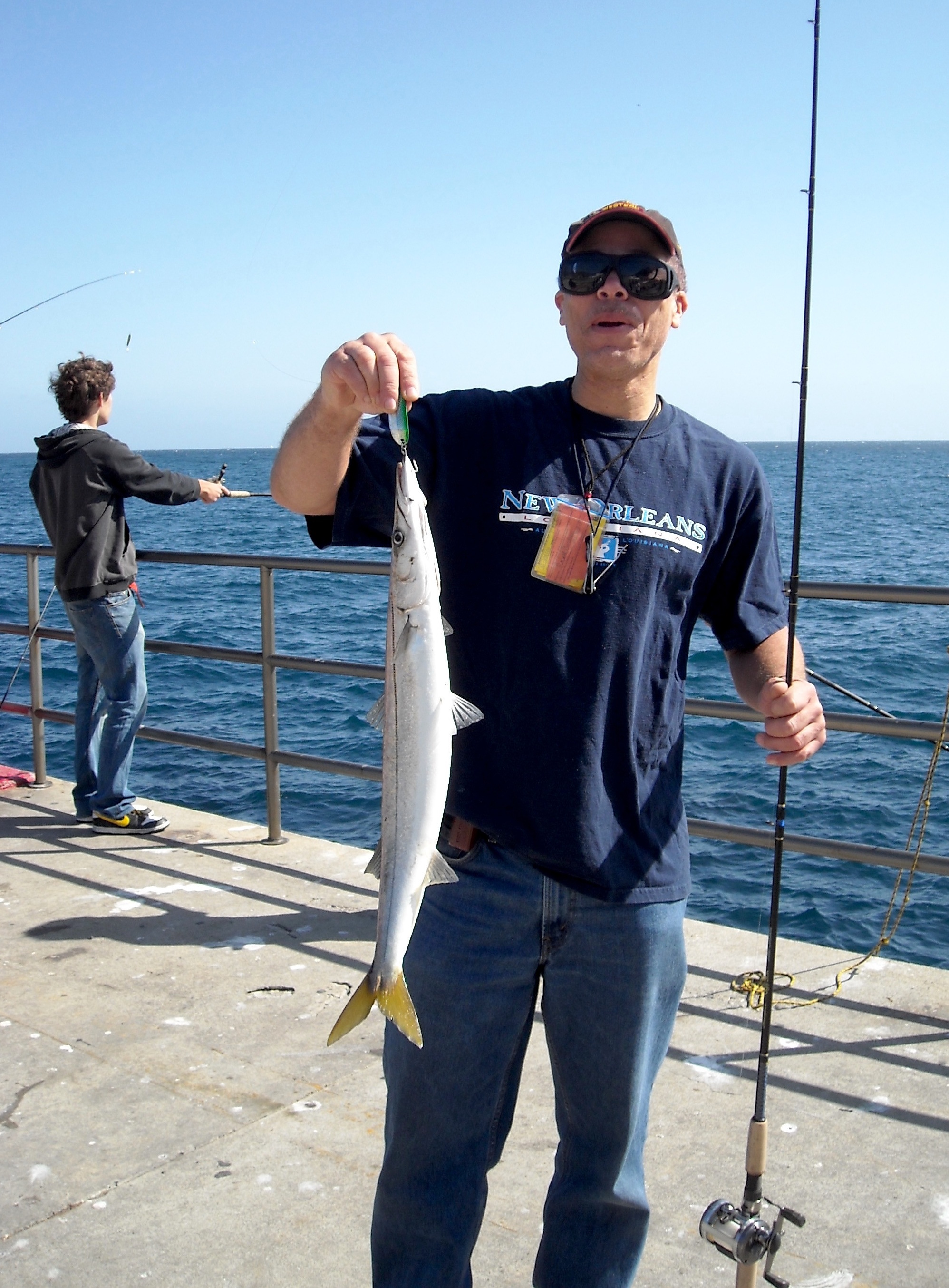
Redfish (Robert) and a barracuda from the Cabrillo Mole in Avalon
Food Value: Keeper-sized fish are considered fair to good eating with white-colored flesh that’s somewhat bland in taste with small flakes and firm texture. The flesh is low in fat content and suitable for pretty much all methods of cooking (including smoking). Barracuda will tend to soften quickly if left in the hot sun (or in gunny sacks on a partyboat) so clean soon after capture and then keep the fillets in a cooler. The Pacific Barracuda should not be confused with the Great Barracuda found in the Atlantic, a fish that can reach a hundred pounds in weight and whose flesh, at least in the older, larger fish can contain ciguatoxins in their flesh, toxins that can produce ciguatera poisoning when eaten. Pacific barracuda are safe to eat.

A small barracuda I caught one night from the Ocean Beach Pier with a MegaBait
Comments: Although most pier fisherman considers barracuda somewhat of a bonus fish today, there was a time, in the not too distant past, when they were common to piers. However, the numbers that frequent piers seem to have decreased over the years. When I first moved from Newport Beach to San Diego in 1963, I was surprised at the number of barracuda caught from piers inside San Diego Bay and Mission Bay. Since then I have come to learn that bays are often the best areas for the young barracuda—small fish up to around two feet in length. In those days it was sometimes common to catch a fish on nearly every cast using a live anchovy or a small lure, especially gold or silver spoons. Today these small fish are illegal and it is best to simply not fish for them; hooks, in particular the treble hooks common to spoons, will tear up the mouths of the under-sized fish.
Strange but true, the only time I ever caught a fish with my line OUT of the water was when I was fishing one day near the Dana Marina in San Diego’s Mission Bay. At the time the marina had its own live bait barge and it always seemed to attract fish, especially barracuda and halibut. My high school buddy Earl and I would occasionally rent a rowboat and fish around that barge. One morning after renting a boat we proceeded to tie gold Krocodile spoons onto our lines before heading out. I left my rod at the back of the boat with the spoon dangling at least 8-10 inches away from the water. Imagine my surprise when a small barracuda jumped out of the water and grabbed the lure as we were rowing out to our spot. And yes, I did land the fish. It happened on August 8, 1964 on a trip where I caught 21 barracuda, 16 queenfish and 2 halibut. The “out of water” fish was the highlight.
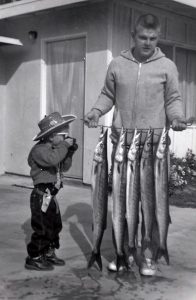
My brother John and I back in 1963. I had caught the barracuda while fishing at Catalina on the Seahorse out of Davey’s Locker in Newport Beach. I caught five barracuda that day the largest weighing 9 lb-2 oz.
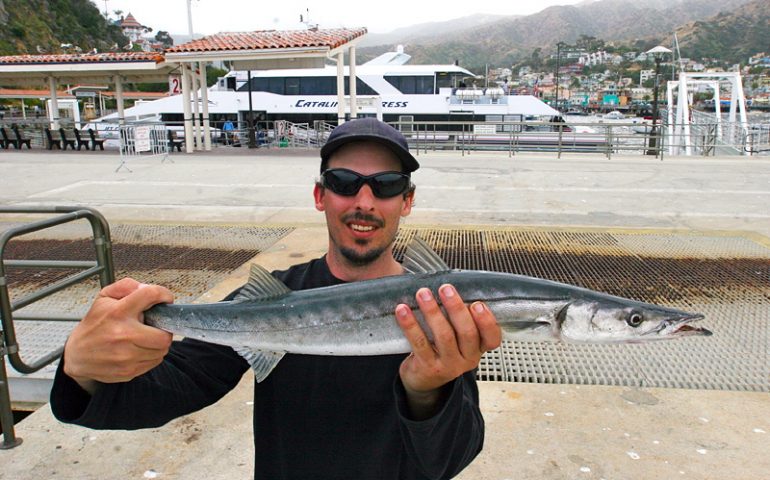
My only out of water fish was caught at Tiburon pier in Sah Francisco Bay in 1975. I was fishing for striped bass using a bucktail jig, I decided to take a lunch break and laid my rod on the side of the pier with the jig about 3 feet above the water. As I stated to eat my sandwich I heard me rod rattling. I found an 18 inch striped bass on my lure about 3 feet above the water.